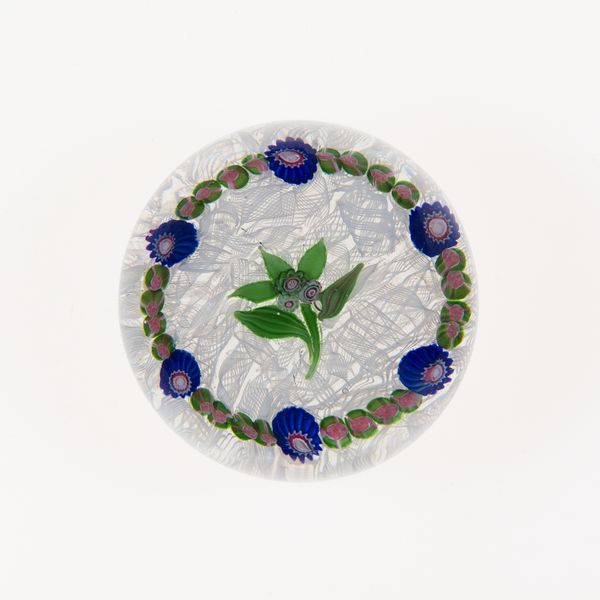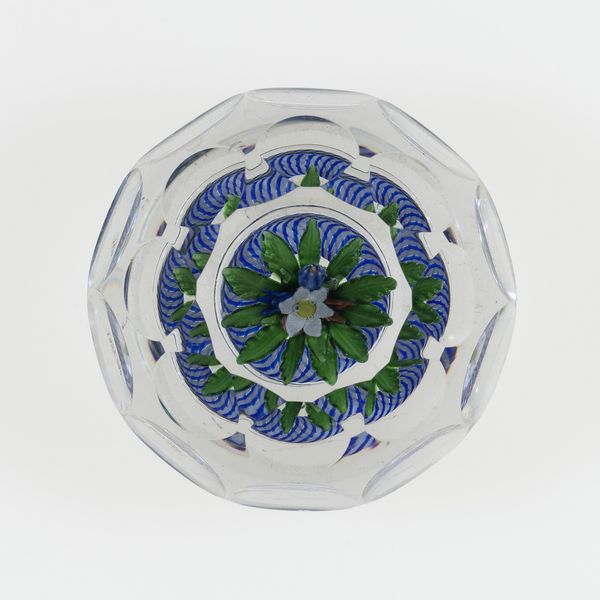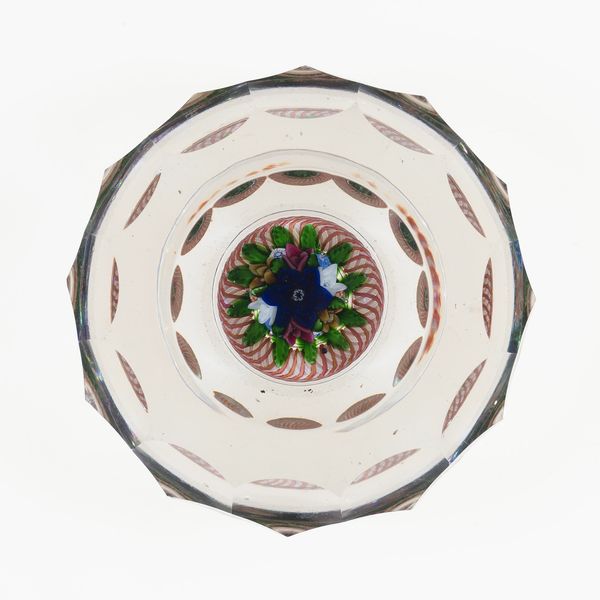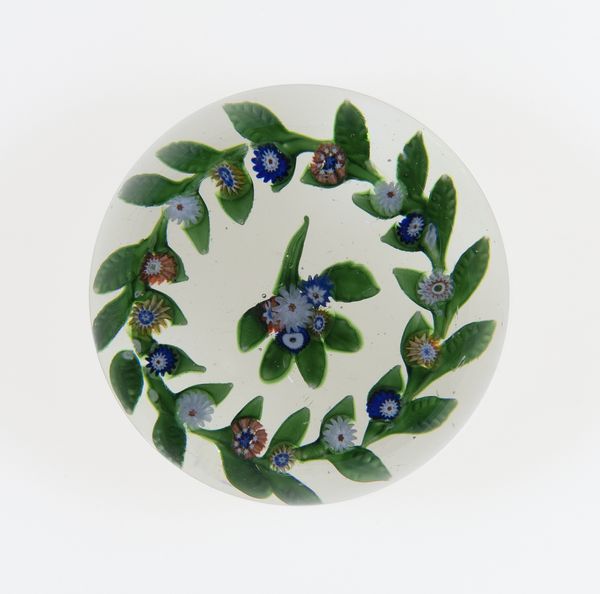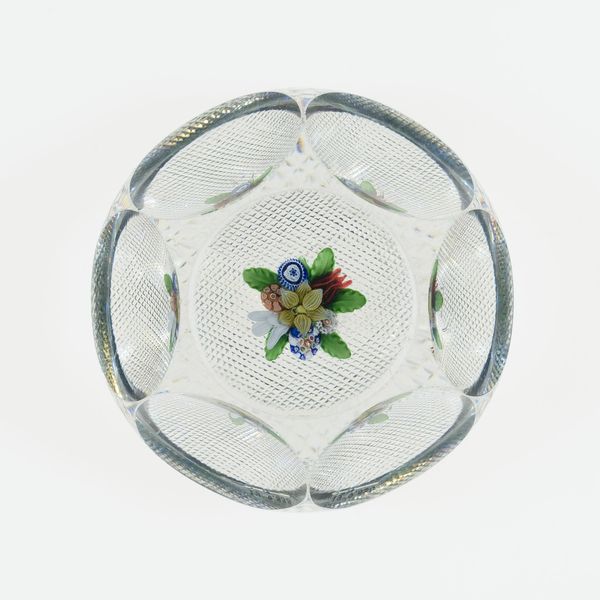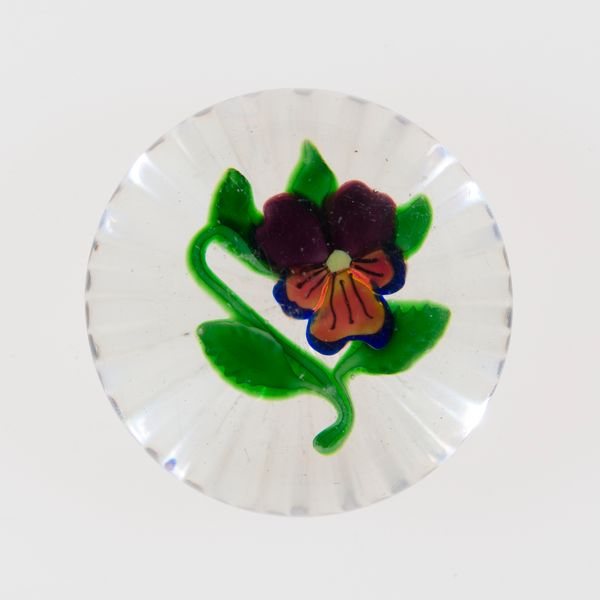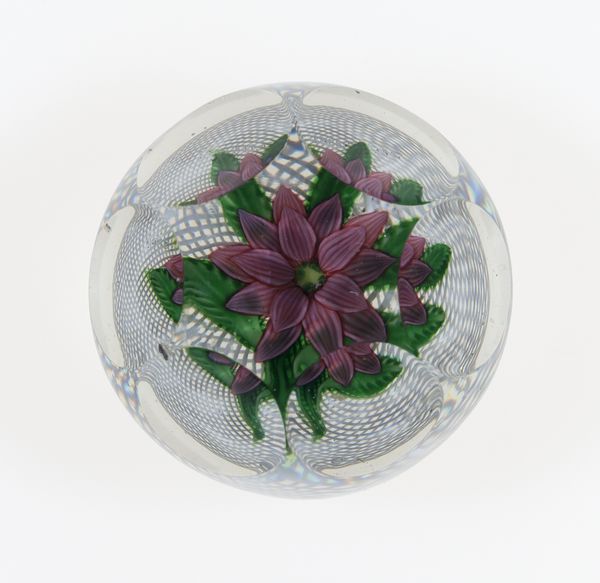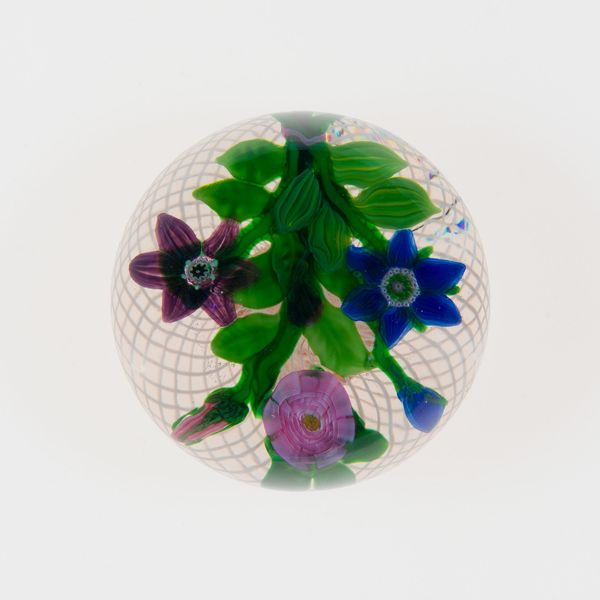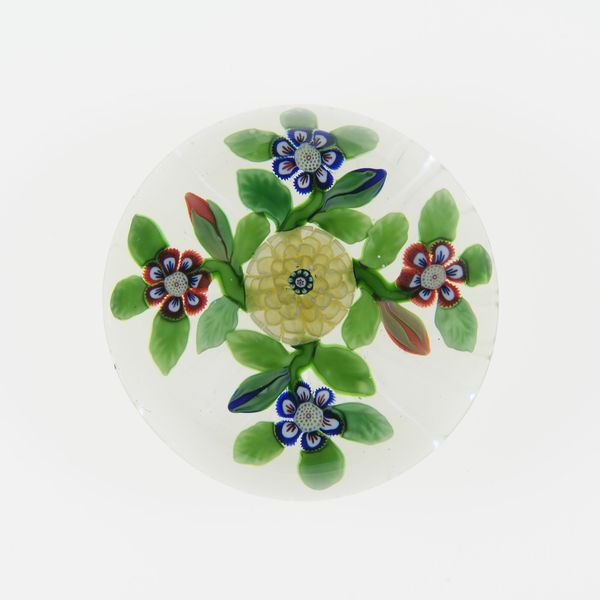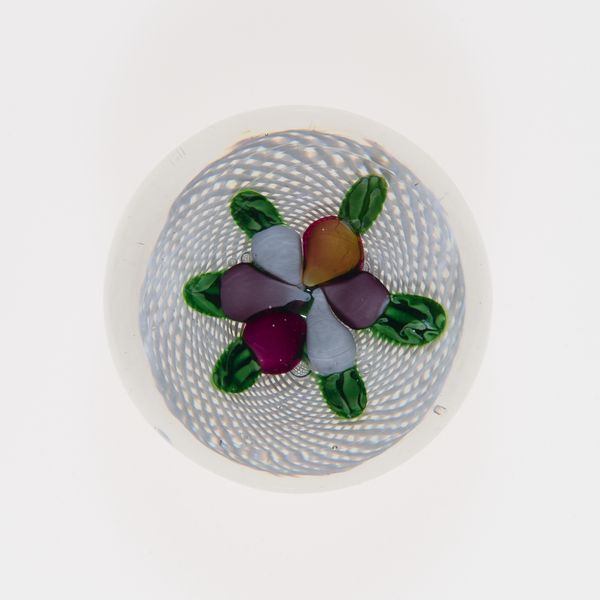
Dimensions: Diam. 7.6 cm (3 in.)
Copyright: Public Domain
Editor: Here we have "Paperweight" made around 1848 to 1855 by Compagnie de Saint Louis, a beautiful object rendered in glass and paper. It feels almost like a preserved moment. What's your perspective on it? Curator: Considering this paperweight from a materialist lens really opens it up. It prompts us to ask questions about the labor involved. The individual who made this, their skill, their time - it was a significant investment, right? And what about the source of the glass and paper itself? These are not neutral materials. Editor: That’s interesting! I hadn’t really considered the individual craftsmanship behind something that seems almost mass-produced now. Where would these materials even have come from then? Curator: Precisely! Think about 19th-century glass production. Were there specific glassmaking hubs whose economic or social structure played into designs like these? Who had the resources to even commission a paperweight? It reflects industrial changes happening then, doesn’t it? Was it designed for use, or to project the owner's class and good taste? Editor: So, the "paper" element you mentioned might actually reveal just as much as the flowers frozen within the glass, maybe about the paper industry at the time? Curator: Exactly. These aren’t just pretty baubles. They are dense packages of production and display, material consumption during the rise of industry. Understanding this production and distribution context enhances how we see. Editor: It definitely changes how I look at it. Thank you for showing me those connections. Curator: Likewise, reflecting on it helps see how craft becomes industry becomes decorative art, shaping what people consume and desire.
Comments
No comments
Be the first to comment and join the conversation on the ultimate creative platform.
